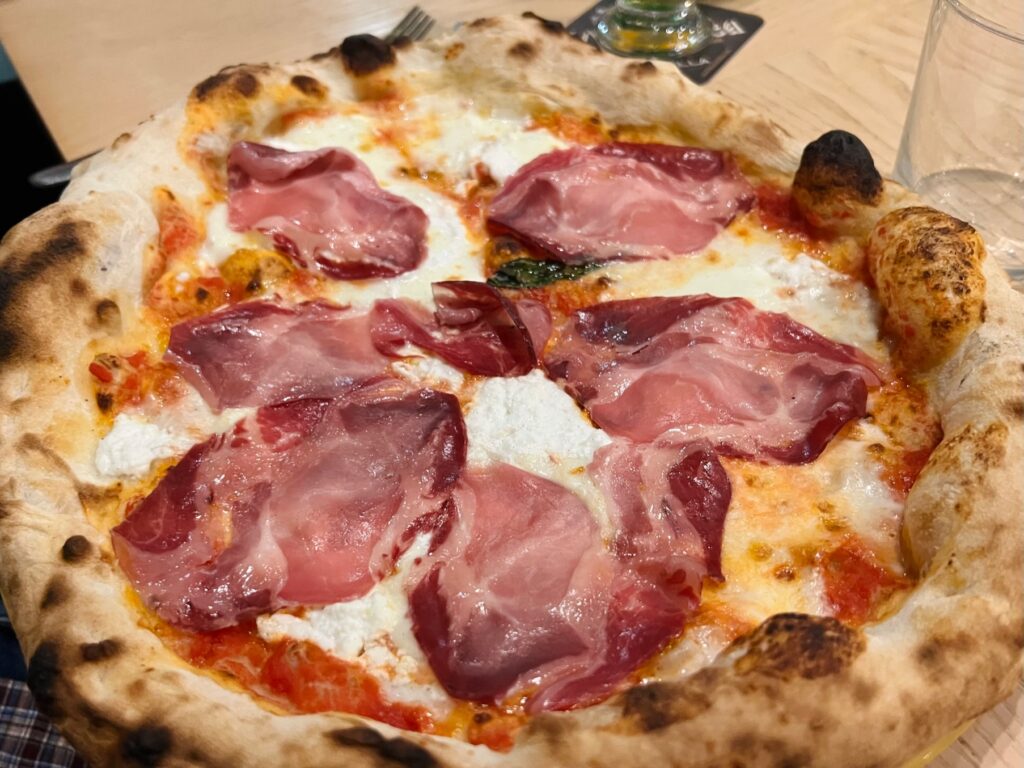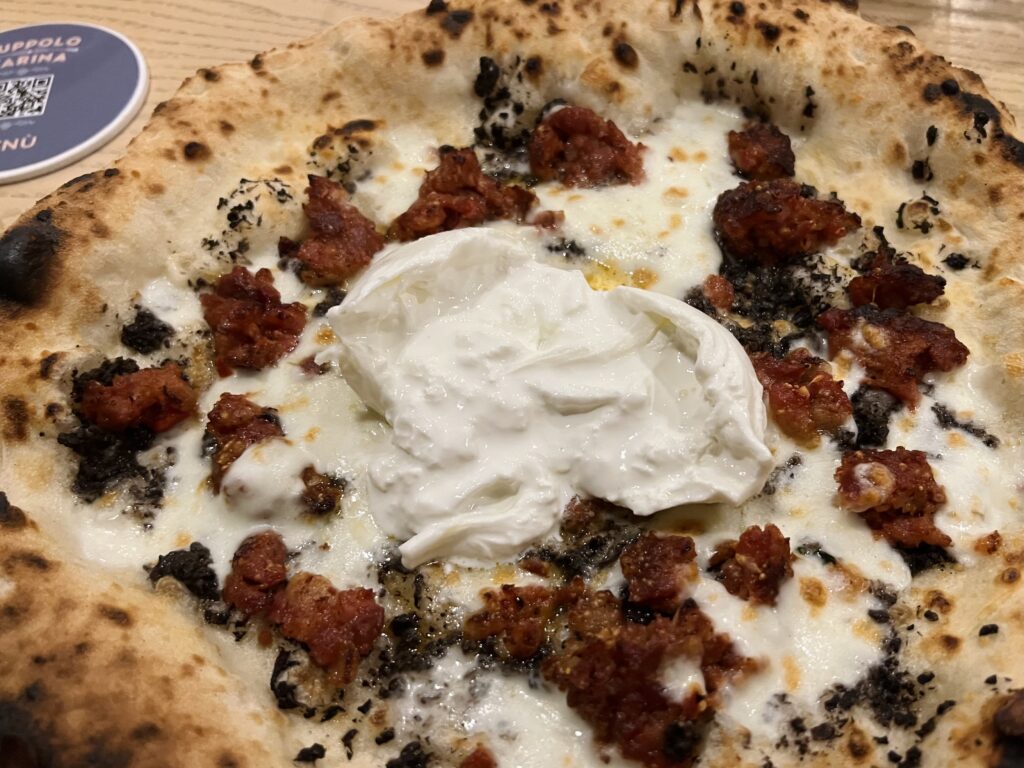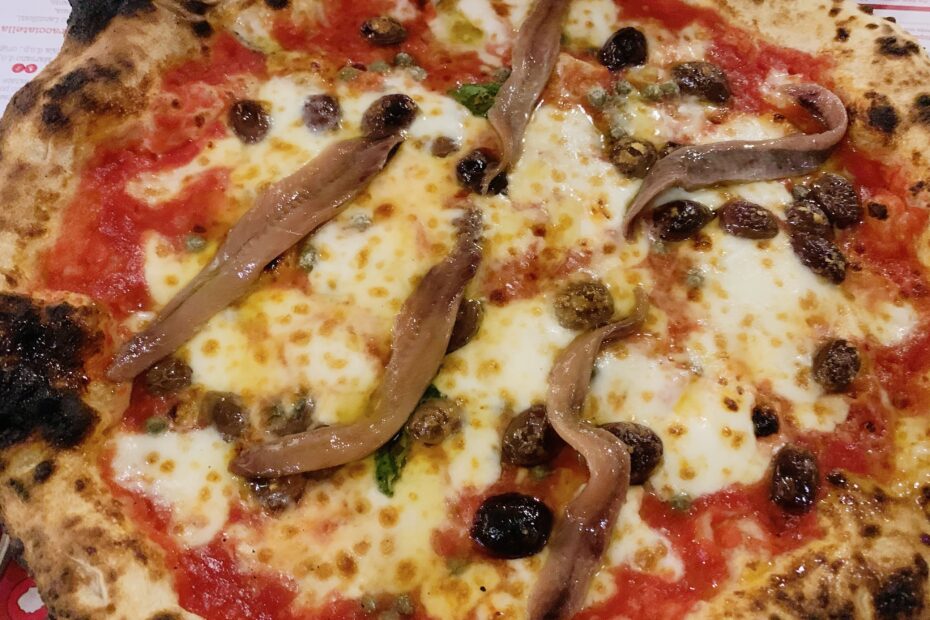Pizza. One of Italy’s most famous exports. But what is it that makes pizza from Italy so special, and can you recreate the magical vacation experience and make an authentic Neapolitan pizza at home?
It is no surprise that Napoli, the birthplace of pizza, is the hub of the pizza napoletana. It has its own Designation of Controlled Origin (DOC). The art of making pizza Napoli even received Unesco recognition in 2017.
Although specific academies are now tasked with teaching the technical know-how of the art of being a Neapolitan pizzaiuolo (pizzamaker), families still guard their recipe variations passed down the generations.
Once back at home, is it realistic to expect to be able to recreate that unforgettable Italian pizza experience away from the Mediterranean sun-soaked saltiness and the heady excitement of balmy lemon scented nights of il bel paese?

What makes a great pizza great?
There is a battle that fixates many Americans. Chicago vs. New York Pizza: which one is the best? The answer is, of course, pizza Napoli.
There are three basic types of pizza Napoli: margherita, marinara and “DOC”.
The margherita is topped with tomato sauce, mozzarella cheese and fresh basil. Marinara comes without the cheese and uses oregano and garlic instead of basil. The “DOC” is made with buffalo mozzarella instead of the usual fior di latte made from cow’s milk.
That’s the way to dough it
The essential elements of making authentic pizza relate to the preparation of the dough and its baking in a wood-fired oven.
Pizza dough should be made with Italian 00 or 0 wheat flour, fresh brewer’s yeast (no dry yeast), water and salt. Fermentation and leavening of the dough must be at least 10 to 12 hours. Once proofed the dough must be rolled by hand or with a slow machine mixer. Do not use a rolling pin.
The dough must be no more than 3mm thick.
For a pizza that’s crispy and not burnt it must bake for 60 to 90 seconds at a very high temperature (485°C) inside a wood-burning oven. The baker’s rotator movement is essential in ensuring even cooking.

Topping
San Marzano tomatoes, which grow on the volcanic plains to the south of Mount Vesuvius, are required for pizzas with DOC designation.
Only two types of mozzarella are used for Neapolitan pizza: fior di latte made from cow’s milk or mozzarella di bufala, made from the milk of the water buffalo.
But even without these ingredients or a wood-burning oven you can still make a great pizza with quality flour, yeast, a can of tomatoes and cheese made from cow’s milk.
Neapolitan Pizza Dough Recipe
Ingredients:
- 450g Italian “00” flour
- 300ml cold tap water
- 3g fresh brewer’s yeast
- 9g sea salt
Instructions:
- In a large bowl, dissolve the yeast in the cold tap water, and then mix in about two-thirds of the flour with a big wooden spoon until a creamy consistency is formed. Mix in the salt, and then the remaining flour a little bit at a time. Continue to mix until all the flour has been absorbed.
- Knead energetically with your hands by folding the dough and pushing it inwards. When the dough is smooth and no longer has lumps, let it rest for 10-15 minutes.
- Dust the dough with flour, place it on a table and then give it a few folds, forming it into a spherical shape until it’s firm and elastic.
- Place dough inside an oiled baking tin and cover, and then allow it to rest and rise for 7-8 hours at room temperature.
- Place dough onto a round sheet pan that’s been lightly greased with olive oil, and lightly press it with your fingertips until the classical, flat-and-round pizza shape is formed (or into a square if using a square-shaped pan). It should be no more than 3mm thick. Cover and let rest for another 3 hours.
- Shape the dough into a ball and place it in a lightly oiled bowl. Cover the bowl with plastic wrap or a clean kitchen towel and let it rise in a warm, draft-free place for 1-2 hours, or until it has doubled in size.
- Add tomatoes (or tomato puree) as desired onto the flattened dough, and put pizza on the base of the oven, baking at 250-280°C for 5-6 minutes. Move pizza to the top rack of the oven and bake for another 6-8 minutes, adding drained mozzarella (if using) only in the last 3-4 minutes. Other ingredients such as extra virgin olive oil and basil should be added at the end of cooking.
Enjoy!


At the pizzeria
No need to overthink it. Great pizza should have a round, regular crust. Ideally charred, bubbled and risen to, at least, 2cm high. Look for a brown speckled base. Not burned. Think the back of a hand aged with liver spots. Beware a yellow base. This betrays too much flour and will result in a bitter taste.
The centre should be soft and even. Lightly spongy.
On top, let the colors of Italy be your guide. Look for a vivid red tomato sauce, pure white mozzarella and unapologetically green basil leaves.

